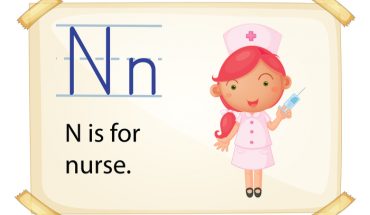For many people, October represents cosy jumpers, falling leaves and a plethora of pumpkins. But for Breast Cancer Now, October means only one thing: Breast Cancer Awareness Month (BCAM).
Throughout the year our supporters are relentlessly raising money for world-class breast cancer research, whether by rattling collection tins, running marathons, or baking up a storm. And today, our fundraisers up and down the country are uniting for one purpose: to wear it pink and help us reach a future where everyone with breast cancer lives.
And today, our fundraisers up and down the country are uniting for one purpose: to wear it pink and help us reach a future where everyone with breast cancer lives.
On wear it pink day, we thought we’d take a look at the back at the research progress that’s been made in the past year – achievements that simply wouldn’t have been possible without the dedication and support of our fundraisers. And with over 450 scientists working tirelessly at 29 institutions across the UK and Ireland, a lot can happen in a year…
Tailoring treatments
We know that breast cancer shouldn’t be treated with a ‘one size fits all’ approach and so our scientists have been working hard to ‘match’ tumours with certain genetic mutations to specific drugs.
Last December they discovered that patients with faults in a gene called ARID1A might benefit from a new group of drugs called ATR inhibitors. ARID1A mutations are common across many different types of cancer, including ovarian and stomach cancer, and so being able to identify which patients could be effectively treated with ATR inhibitors is a significant step towards personalised medicine.
New drugs on the block
Around 5% of patients have faults in their BRCA genes, which can be passed down through families. Finding new ways to treat those with BRCA mutations is vital, as those with faulty BRCA genes are more likely to develop triple negative breast cancer – a more aggressive form of the disease. Earlier this year saw the announcement that a group of drugs called ‘PARP inhibitors’ may hold the key.
Breast Cancer Now has a long history with PARP inhibitors; in 2005 our scientists – based at the Breast Cancer Now Toby Robins Research Centre at The Institute of Cancer Research, London – helped make the initial discovery that PARP inhibitors had the potential to kill cancer cells that have BRCA mutations. Fast-forward to 2017 and we were delighted to find out that PARP inhibitors slowed the progression of secondary breast cancer in a US-based clinical trial.
Scientists are still looking for ways to make these drugs even more effective so we’ll be keeping our ears to the ground for further developments!
Cancer clues in the blood
One of the most exciting areas of breast cancer research at the moment is the development of blood tests, or ‘liquid biopsies’, which analyse tumour DNA found in the bloodstream to monitor how patients are responding to treatment.
A recent study has found that a single blood test could be used to monitor tumours, by looking for mutations in 13 key genes which could indicate that drug resistance is developing. We hope that liquid biopsies will help doctors to select the most suitable treatments for patients and allow alternatives to be given as soon as resistance is detected, ultimately improving the chances of survival.
Family matters
Over 113,000 women across the UK are taking part in the Breast Cancer Now Generations Study, one of the largest studies in the world into the causes of breast cancer. The study was launched in 2004 and will run for 40 years but we’re already seeing results. Using data from the study, researchers have recently developed a new and more accurate way to calculate the risk of breast cancer based on a family history of the disease. This new method, known as the Family History Score, takes into account the number of family members diagnosed with breast cancer, as well as their age and the family’s size and structure.
Taking on triple negative breast cancer
Triple negative breast cancer can be particularly aggressive and, unfortunately, there are fewer treatment options available for patients with this form of the disease. Many studies are looking for new ways to treat triple negative breast cancer and we were excited to announce that our scientists have identified that the drug palbocliclib, may benefit these patients.
Palbociclib was initially developed to treat hormone-positive breast cancer, but this latest study found that the drug may also be effective for a specific group of triple negative patients. Excitingly, this study also revealed why different types of cancer respond differently to palbociclib, which may one day help doctors to identify whether or not a patient is resistant to the drug.
Roll on Breast Cancer Awareness Month 2018
Over the past few decades research has progressed significantly, and now over 80% of those diagnosed will live beyond five years. However, in 2017 alone, breast cancer will still take the lives of around 11,500 women and 80 men in the UK. We believe that if we all now, by 2050, everyone who develops breast cancer will live. As scientists continue to unravel the genetic mutations driving cancer growth and drug resistance, and pinpointing the precise causes of the disease, we look forward to BCAM 2018 and the progress that will have been made.
- Breast cancer – the latest advances - 20th October 2017







I realise the writer works for an organisation which exists because breast cancer levels are astronomical and no-one does themselves out of a job, but, how much of the money raised goes to finding out the cause of so much of this disease, as opposed to doing nothing about the cause and funding processes, supposedly, to help women who succumb, to live? Is not prevention better than cure? It is obvious that changes in our world over the last half century must be contributing to the massive increase in Cancer in general and this form in particular, so where is… Read more »